
With the AI-powered Whatfix DAP, you can create in-app guidance, support users in the flow of work, and analyze application usage.
A digital adoption platform (DAP) enables organizations to create onscreen overlays for mobile or web apps that enable end-users (customers or employees) with contextual in-app guidance and support in the flow of work, ultimately driving end-user adoption. With a DAPs no-code content editor, you can create, launch, segment, and test in-app experiences like product tours, interactive walkthroughs, task lists, tooltips, pop-ups, self-help centers, and field validations to assist users and guide them through every aspect of an application and its contextual tasks and workflows, ensuring proper usage.
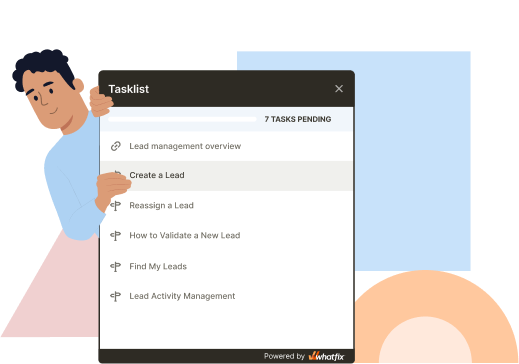

With the AI-powered Whatfix DAP, you can create in-app guidance, support users in the flow of work, and analyze application usage.
DAPs first gain traction as a way for customer-facing teams and product managers to create product-led onboarding experiences, helping new users realize value quickly with guided experiences – all without the need for technical resources. Product managers could track, benchmark, and analyze the impact of their in-app tutorials and flows, and make data-driven improvements to these experiences.
As modern enterprises now rely on “mission-critical” enterprise software, organizations must invest in similar strategies to create frictionless employee experiences and digital business processes. When you invest in new technology for your company or as part of your product, you want your customers and employees to use the technology to its fullest extent. DAPs show people each feature of the technology and how to use it, guiding them to their aha moment faster. This helps ensure your company gets maximum value (and therefore maximum ROI) from the application by driving digital adoption.
In our 2024 Digital Adoption Trends report, 93% of employees said three or more applications are required to complete their day-to-day responsibilities, while 50% said that number was over 50%. This number skyrockets when you consider the number of applications an employee uses weekly or monthly.
However, a digital skills gap in the workforce widens as technology evolves. Companies have historically failed to adjust to this change, with 33% of employees saying they received an hour or less of training and onboarding when asked to use new software. 78% of employees said they lacked the software expertise and knowledge of the tools they use daily and could use additional training.
Inappropriate software use and issues with onboarding and other user processes cause more than 91% of enterprise software errors. Digital adoption platforms help prevent user error in the application by walking people through different processes and tasks. IDC’s Future of Work Trends 2024 predicted that by 2027, 80% of G1000 organizations will mitigate technical skills shortages and conduct employee upskilling with a DAP.
Digital adoption platforms empower organizations to find true digital ROI of internally-used software applications, onboard and support customers across their products or on their website, understand and analyze how end-users engage with apps and navigate workflows, and create a frictionless experience for all technology end-users – whether that’s an account executive using a CRM, a field service technician using a tablet-based app, a patient navigating their online patient portal, or a customer finding value in your SaaS platform.
With that said, the following benefits apply to all modern DAP solutions:
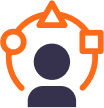
For internal enterprise software, DAPs accelerate user onboarding by enabling end-users to learn by doing and providing in-app training on their tasks and workflows, reducing new employees’ time to proficiency. For customer-facing and product teams, DAPs provide contextual product-led user onboarding that drives adoption rates and accelerates new customers’ time to value. Reduced dependency on engineering to create in-app experiences, allowing product teams to be more agile.
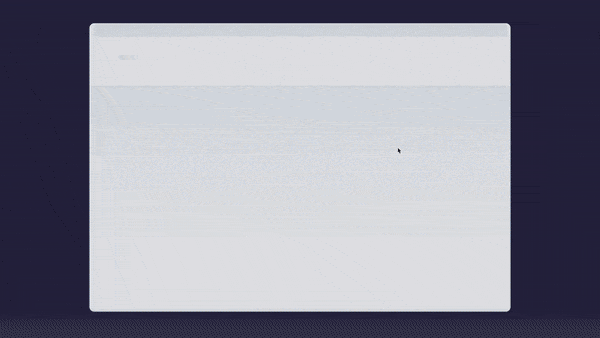

DAPs deflect support tickets by embedding Self Help into your application UI, enabling end-users with self-service support experiences. Self Help integrates with your knowledge repositories, providing process documentation, SOPs, FAQs, technical support, software documentation, and product help directly in your application’s workflows. This reduces dependency on your help desk and end-user support teams by providing end-users with an on-demand, AI-powered support assistant, improves knowledge sharing, and transforms CX.

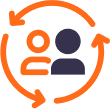
Accelerate adoption of newly implemented applications, helping organizations realize value from new software implementations and support end-users with a change management strategy that enables end-users. By continuously supporting end-users in the flow of work, organizations can maximize the ROI of digital transformation investments, improve their digital maturity, and achieve business outcomes.

By supporting end-users at the moment of need, organizations can provide constant upskilling and reinforcement training to their employees. This reduces time-to-task completion, builds digital dexterity and more tech-savvy employees, and facilitates workplace innovation. In the long term, it acts as a catalyst to improve employee productivity, efficiency, and overall digital workplace experience.

DAPs act as a process governance guardrail and ensure compliance, guiding end-users through the most streamlined workflow steps by providing contextual tips and reminders to ensure end-users avoid errors, stay on track, and enter data correctly. Analyze processes to identify where users experience friction and benchmark time-to-task-completion. Launch new in-app guidance to overcome process friction and track a continuous improvement approach to your application tasks and workflows.


Build your new feature launch plan with a digital adoption platform. Drive awareness of new features by making an in-app announcement with a Pop-Up. Embed how-to-use videos on new features in your Pop-Up and create beacons and tooltips that nudge users to use new features. Guided Task Lists and Flows walk users step-by-step through new feature and embed your product release notes into Self-Help. Take the same approach to advanced features to improve overall product usage and build power users.

Communicate to users directly with in-app messages. Announce upcoming trainings or webinars via Pop-Ups or embed new how-to videos or product announcements into a contextual message. Target specific user segments based on their role, usage, or trigger actions to drive engagement and improve product usage.

Collect user feedback from users inside your application with in-app surveys. From CSAT, eNPS/NPS, product bugs, feature requests, or general end-user feedback, DAPs enable teams to collect qualitative feedback and close the feedback loop, allowing users to directly influence the product roadmap, improve employee experience, and drive user engagement.

DAP software’s core functionality is to support end-users at the moment of need by guiding them through different application features and processes, offering step-by-step instructions to help them complete specific tasks.
Modern DAPs offer a range of features to support your specific technology adoption needs, whether you’re looking for a solution to facilitate in-app guidance and support for customer or employee end-users (or anything in between).
With that said, here are the core capabilities and features that make a digital adoption platform a proper DAP:
DAPs provide a simple content creation experience via a no-code editor. This enables non-technical team members to create, manage, and update in-app experiences without requiring engineering support. Customization features allow content creators to style in-app content to match your company’s or product’s branding.
Utilize a library of in-app guided elements including product tours, interactive walkthroughs, tooltips, hotspots, field validations, pop-ups, and launchers. Advanced DAPs provide if/then workflow builders and segmentation features to target specific types of users based on role, experience level, end-user type, etc.
Integrate your knowledge repositories (knowledge base, help desk, process documentation, company procedures, Google Drive, etc.) within an in-app help center to provide self-service support to end-users that deflects support tickets and drives process governance.

Easily create and launch in-app surveys to collect user feedback like new feature requests, product bugs, eNPS/NPS, customer sentiment, or post-training recommendations by utilizing a library of survey templates.

Understand how end-users engage with and use your in-app content, like “what is the most asked help center questions?”, “what is the completion rates of my user onboarding task lists?”, “how many times did a user launch an interactive walkthrough?”, and more.
Modern DAPs train LLMs on your knowledge repositories, turning your help center into an in-app digital assistant and resolving any end-user issue. AI-powered DAPs assist in creating new in-app content, analyzing analytics to identify trends, and supporting end-users in completing routine tasks.
Advanced DAPs also offer additional features tailored to different use cases, including auto-translation of content, dynamic content, multi-format content exporting, and more.
As seen above, digital adoption platforms can be used across dozens of digital workplace cases, helping to make applications more user-centric.
However, not every digital adoption platform provider is intended for every use case. While a few DAP vendors can provide comprehensive, full-coverage solutions for multiple use cases, other DAP vendors are tailored to meet specific technology adoption needs.
DAPs fall into one of two categories: a comprehensive, multi-purpose DAP or a best-of-breed DAP.
Often, best-of-breed DAPs are behind those DAP vendors with a larger market presence and a more comprehensive set of use cases, from application type to implementation method to end-user roles.
While your initial use case may require a DAP for only one use case, consider how a DAP could facilitate better experiences, maximize technology ROI across other parts of your organization, and create unified experiences for processes that span multiple applications. For example, consider the core mission-critical software your organization relies on – your HCM, CRM, ERP – or industry-specific software like EHR systems in healthcare or claims management software in insurance.
DAPs enable end-users to get the most out of their desktop, web, and mobile applications with in-app guidance, contextual tips, and self-help user support. But what does that mean, and what can organizations do with a DAP?
Let’s explore sixteen ways to use a digital adoption platform across your application experiences and business units. We’ll explore use cases for:
CIOs, application owners, and IT managers are responsible for their enterprise’s IT roadmap, which includes digital transformation, change management, software implementations, and employee IT support. Here are a few ways DAPs enable CIOs to achieve their digital strategy.
nterprises must keep up with digital technologies to meet evolving customer expectations, stay competitive, and enable their employees with more productive and efficient workflows.
But simply implementing software won’t work. Your organization needs to create an end-user enablement strategy – from guided onboarding, reinforcement training, and self-help support content to learn the complexities of new digital technologies, avoid errors, ensure process governance, and achieve business outcomes.
With a DAP, IT teams can accelerate change and drive digital transformation through in-app guided flows, onboarding task lists, smart tips, field validations, self-help wikis, and more – all contextual to certain types of employees and business units, no matter how they use an application.
Modern employees, on average, use 12 applications to achieve their duties and responsibilities. This has led to an increase in the need for internal IT and help desk support.
With a DAP like Whatfix, IT teams can embed a self-help wiki onto their digital applications, from their CRM, ERP, HCM, email, and more, to provide employees with a self-service user support portal at the moment of need, anywhere they are.
These IT self-help portals connect with organizations’ knowledge repositories, including knowledge bases, process documentation, LMS, Google Drive, internal portals, and more. Employees can search for the specific issue they’re encountering to find the contextual support they need, often prompting a connected in-app flow that walks users through the process they need help with.
Often, employees are unaware of the right processes they need to follow. They complete a task once, then follow the workflow that has previously worked for them for the foreseeable future. That doesn’t mean the workflow they’ve adopted is the correct way – and many times, this leads to poor data quality, inefficient workflows, and messy application implementations.
With a DAP like Whatfix, organizations can prompt users with contextual tips and information when they’re not following the correct user journey. You can ensure that specific data fields are mandatory for processes like creating new opportunities on a CRM or completing a performance review in an HCM. IT teams can also ensure that the data is entered in the correct format and that all data sets are clean and usable.
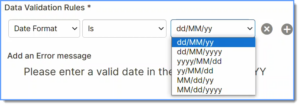
DAPs facilitate frictionless change management for enterprise organizations by supporting end-users throughout the change process with in-app guidance, on-demand support, and feedback mechanisms.
Announce upcoming process updates, regulation changes, or company news via an in-app pop-up. Guide end-users through new workflows with Flows and familiarize them with their tasks with Task Lists. Self-help allows you to integrate your knowledge repositories within your applications, helping end-users resolve any change-related support issue. Collect change feedback from users on what went right, their concerns, and how future change projects should roll out.
Leaders can craft efficient business processes, but organizations will only extract value from them if end-users are correcting using them. When end-users fail to follow the correct process steps, they encounter time-to-task completion times and enter data incorrectly. This becomes a snowball effect, with applications not providing the business value they initially intended and data becoming so dirty that insights can’t be extracted from them.
A digital adoption platform acts as a guardrail for your business processes and helps end-users understand and follow the correct path for each workflow. This in-app governance drives process adoption and ensures data is entered comprehensively and in the right format. A DAP also provides application owners with insights into taking a data-driven approach to continuous process optimization. By identifying areas of friction causing funnel dropoff or slow process times, IT leaders can make necessary changes to workflows and create new in-app support content to create frictionless processes.
Customer success teams are tasked with customer onboarding, support, retention, and growth strategies to enable partners to get the most out of a product or service. Here are a few ways DAPs enable customer-facing teams to provide a better customer experience:
Traditionally, customer onboarding took a white-glove approach, with customers having in-person training or 1-1 video conferencing to get started using a product. Now, SaaS companies and digital services have moved into self-service onboarding direction, where customers are enabled with in-app experiences that guide them through the onboarding process.
With a DAP like Whatfix, customer-facing teams are empowered with no-code tools to create contextual onboarding experiences for different types of customers. These experiences can include product tours, onboarding task lists, tooltips, beacons, and more – all helping to guide new customers to their “aha!” moment and ultimately driving product adoption.
69% of all people prefer web self-service over other forms of support. Customer self-service empowers customers to solve their support-related issues without waiting for a support agent and improves your customer service agents’ productivity by deflecting support tickets.
With a DAP like Whatfix, customer-facing teams can provide real-time support at the moment of need, directly inside their digital applications or website. Whatfix integrates with a company’s support repositories like their knowledge base, FAQs, support portal, online community, support documentation, API documentation, and more, enabling customers to use an in-app wiki to find answers to support-related issues, without leaving the application or submitting a support ticket.
The self-help wiki is populated with contextual support documentation and answers based on where the end-user is in an application. End-users can also search for any contextual issues they are facing. Whatfix’s Self Help also collects data on what users are searching for, providing insights into what new documentation needs to be created and helping identify areas of friction inside a product.
After onboarding and customer support, customer-facing teams are tasked with building relationships with partners, learning about related issues they’re facing in their organization, showcasing how their product can be leveraged in new ways to help solve these problems, and retaining and upselling customers when their contracts are up for renewal.
With a DAP like Whatfix, customer-facing teams can create in-app beacons, tooltips, and pop-ups that provide timely reminders for customers, such as prompts to check out a newly launched feature, offering contract renewal discounts, and educating customers on new use cases for your product that can create upsell opportunities.
After onboarding and customer support, customer-facing teams are tasked with building relationships with partners, learning about related issues they’re facing in their organization, showcasing how their product can be leveraged in new ways to help solve these problems, and retaining and upselling customers when their contracts are up for renewal.
With a DAP like Whatfix, customer-facing teams can create in-app beacons, tooltips, and pop-ups that provide timely reminders for customers, such as prompts to check out a newly launched feature, offering contract renewal discounts, and educating customers on new use cases for your product that can create upsell opportunities.
Releasing a new feature? Is your pricing changing? Are you hosting an upcoming customer training webinar? Are you launching a new product line? A digital adoption platform enables customer success teams to have a direct line of communication with customers and end-users, driving awareness of new product news and marketing campaigns.
Accelerate new support agent onboarding by providing hands-on training experiences. Support them in real-life scenarios with Self Help, providing a repository of how-to-resolve guided workflows that help them find SOPs and resolve issues quickly.
For complex B2B products, customers rely on their CSM to help them set up their new software, train them on how to realize value from it and help provide new use cases for maximizing ROI. However, this requires CSMs to have the nuanced product knowledge to understand the application, easily utilize its features, and communicate its benefits. With a DAP, product knowledge training for your CSMs and sellers becomes simple with interactive in-app guidance that helps your customer-facing teams learn how to use the tool and its features.
HR & L&D teams are tasked with onboarding new hires, providing upskilling and reskilling, developing internal talent, communicating change and company announcements, and creating an employee experience that empowers employees. Here are a few ways DAPs enable HR and L&D teams to provide guidance and support across the employee lifecycle:
A core area of ownership of L&D and HR teams is employee onboarding. With hybrid and remote work, new hire onboarding has become more difficult for HR teams who must balance getting new hires up to speed on internal tools and processes with introducing and integrating teams into social ecosystems.
With a DAP like Whatfix, enterprise HR teams can create in-app guided onboarding experiences to help employees familiarize themselves with your digital workplace and reduce their time-to-proficiency to get them productive quicker. With Whatfix, teams can create guided tours and onboarding checklists to show new hires how to use their new CRM, HCM, ERP, and other enterprise tools. HR teams can also create pop-ups to introduce new hires to company culture. Create replicate application sandboxes to provide hands-on, interactive user training without risking live software usage.
With constant technology evolution, agile business processes, and constant workflow optimization, employees require constant upskill support and reinforcement training to complete their daily responsibilities and tasks.
With a digital adoption platform, support your employees in the flow of work with contextual, role-based guidance. Flows provide support on complex workflows or infrequently done tasks. Smart Tips provide time-sensitive information that help end-users perform the right action. Field Validations ensure data is entered correctly and comprehensively. Self Help acts as a personal AI assistant, pulling information and SOPs from your knowledge repositories directly into the digital workplace.
HR teams are inundated with people-related questions all the time. These questions may include things like:
With Whatfix, HR teams can empower employees with an internal Self Help wiki that overlays their digital workplace and allows employees to search this embedded wiki for any company-related or HR question.
This wiki can also include process support for HR processes that employees may have trouble with, such as how they can complete their performance review or update their personal information in their HCM. This accelerates HR digital transformation, reduces HR-related support issues, improves process adherence, improves employee engagement, and creates a more robust experience for hybrid and remote team members.
HR teams own company-wide communication and employee engagement pushes. These company announcements may be for:
HR teams may rely on emails or Slack messages to get the word out about these announcements. But with a DAP like Whatfix, HR can create pop-ups that overlay on the screens of employees when they log into their email or other applications. HR teams can include a simple message with a CTA attached to a third-party link, include a video in the pop-up, or attach the pop-up CTA message to an in-app guided flow that walks employees through more complex processes (like completing your benefits enrollment or performance review.)
Measuring training effectiveness is a significant challenge for L&D teams. With a DAP like Whatfix, L&D teams can use training gamification to measure learning retention and improve employee engagement. Whatfix’s no-code editor enables non-technical L&D professionals to attach in-app quizzes after a training or onboarding session to gauge how effective the material was and if employees achieved their learning goals, or need additional training.
Gathering employee feedback is another essential aspect of HR teams, from understanding overall sentiment and employee NPS, to gathering feedback on specific training and onboarding sessions. With a DAP like Whatfix, HR teams are empowered with the no-code tools to build and launch in-app native surveys to collect employee feedback in their digital workplace. HR teams can also attach these feedback surveys directly after guided flows and self-support experiences, helping to collect real-time feedback.
Product managers are tasked with creating product-led onboarding experiences that reduce time-to-value and drive product adoption. Here are a few examples of how a DAP empowers product teams.
Product tours are the first experience new users have with a product. Typically, product managers rely on their engineering team to build and manage their product tours.
With a DAP like Whatfix, product managers are empowered with a no-code editor to create native-looking, branded product tours for first-time users. Whatfix allows product managers to create in-app pop-ups including embedded videos or that prompt guided experiences.
Whatfix also collects user data on how they interact and engage with these product tours, allowing product managers to iterate and test their product tours on the fly, without engineering dependencies.
User onboarding goes far beyond a simple product tour. And with a DAP like Whatfix, product teams can create entire in-app guided user onboarding experiences for different user cohorts without engineering support. With Whatfix’s no-code editor, product managers can create, launch, and test various onboarding UX elements, including user onboarding checklists, product tours, interactive walkthroughs, tooltips, and more – all while staying on brand with native-appearing onboarding modules.
With a DAP, feature management becomes a breeze for product managers. Use in-app surveys to collect feature requests and identify product bugs. Craft a new feature announcement strategy by leveraging in-app messaging to drive awareness of your product updates. Embed a video explainer in a Pop-Up and connect a guided Flow to the CTA action, helping guide users through your new feature. This allows users to realize the value of a new feature fast, helping to drive feature adoption.
Does your product have a major new update coming, like a new feature or interface redesign? With Whatfix, product managers can prompt users with in-app pop-ups to make product announcements or showcase new features to users – without asking for engineering support. Product teams can embed a video in these pop-ups, or link the CTA to their product release notes for major updates or a blog post for additional context.
DAPs provide the no-code tools for product managers to drive user engagement with in-app experiences. Create Pop-Ups to alert users of a new promotion or deadline and launch Smart Tips that nudge users to take specific action. Create a segmented in-app tutorial that helps struggling users gain experience with advanced features. Convert freemium users to paid subscribers by prompting them with in-app Pop-Ups and Launchers.
Digital transformation and technology adoption vary by industry, with certain sectors lagging behind more advanced sectors. Each very industry provides unique technology adoption and end-user support challenges contextual to its needs – but DAPs have found tremendous traction in these markets due to the nature of complex software needs, differing implementation needs, and a large digital skills gap.
In this section, we’ll explore digital adoption platform use cases by sector, including:
Banking and financial services transformation is critical for modernizing legacy systems, improving customer experiences, and ensuring regulatory compliance. However, financial applications—such as core banking platforms (e.g., Temenos, Finastra), CRM tools (e.g., Salesforce Financial Services Cloud), and risk management software—often have complex workflows that employees and customers struggle to navigate.
With real-time assistance and support, DAPs streamline adoption by guiding employees through critical workflows, such as mortgage origination, loan processing, and fraud detection. They improve the usability of customer self-service portals and support users in completing tasks like fund transfers or investment management. Additionally, DAPs help banks maintain compliance by delivering just-in-time policy reminders and tracking process adherence.
BFSI DAP Use Case: ICICI Bank used Whatfix DAP for its corporate banking customers, providing in-app guided experiences to drive adoption of its new online banking platform. It created an embedded help center which prompted end-users to launch various in-app walkthroughs on its core features, like how to view transaction history. With Whatfix DAP, ICICI Bank reduced support questions from its banking report by 50% and improved customer NPS by 5 points.
Call centers rely on various software applications—like contact center platforms (e.g., Genesys, Five9), CRM tools (e.g., Salesforce, HubSpot), help desk systems (Zendesk) and workforce management systems—to deliver exceptional customer service. However, agent turnover is high, making call center onboarding and training a continuous challenge.
DAPs accelerate agent ramp-up times with interactive walkthroughs that provide real-time guidance on handling tickets, managing customer interactions, and updating CRM records. Sandbox environments provide a way for training teams to provide hands-on user training for new agents in a risk-free sandbox. Contextual Self Help ensures that agents can access knowledge base resources instantly without disrupting calls. Additionally, call centers use DAPs to reinforce compliance by embedding call scripting and data entry best practices within workflows, reducing errors and improving customer satisfaction scores.
Call Center DAP Use Case: A financial and tax service provider faced the challenges of onboarding and training seasonal call center agents during tax season. With Whatfix DAP, the company replaced lengthy video tutorials and risky live system access with in-app guidance in a sandbox environment, allowing the company to provide hands-on training to its season agents. This reduced training time by 50%, eliminated the need for a two-week training setup period, and enabled the company to be agile with its workforce planning during peak busy times.
Public sector organizations are modernizing their IT infrastructure to improve citizen services, but employees often struggle with adopting new ERP systems, case management platforms, and procurement software. The complexity of applications like SAP, Workday, or ServiceNow can lead to inefficiencies and service delays.
DAPs help government agencies bridge the digital skills gap by offering in-app training, ensuring that employees can process permits, manage benefits programs, and complete procurement workflows with minimal disruption. Additionally, DAPs support citizen-facing services, guiding users through online form submissions, tax filings, and healthcare applications, reducing reliance on call centers and in-person visits.
In healthcare transformation, software adoption directly impacts patient care. Clinicians, administrators, and support staff must navigate complex electronic health record (EHR) systems (e.g., Epic, Cerner), telemedicine platforms, and hospital management software while adhering to strict regulatory standards like HIPAA.
DAPs improve efficiency by embedding in-context guidance within EHRs, helping doctors and nurses document patient encounters accurately while minimizing administrative burden. They also ensure smooth onboarding for new staff by providing interactive, role-specific training on patient scheduling, insurance claims processing, and medication management. Additionally, hospitals use DAPs to reinforce compliance by surfacing reminders about patient privacy laws and documentation best practices at the moment of need.
Healthcare DAP Use Case: AbleTo is a virtual mental health provider who rapidly grew during the pandemic. With Whatfix DAP, it was able to meet the demand of its virtual services by onboarding 2,500 clinical therapists and coaches to its eportal through in-app guidance, enabling the app to 10x the number of providers onboarded, save $70,000 in training and onboarding resources, and improved patient task completion by 50%.
Insurance companies rely on complex policy administration systems, claims processing software, and underwriting platforms (e.g., Guidewire, Duck Creek, Applied Epic). However, agents, adjusters, and underwriters often struggle with fragmented workflows and frequent policy updates.
DAPs enable insurance firms to improve process adherence by embedding step-by-step guidance within their core systems, helping users efficiently process claims, generate quotes, and manage policy renewals. Additionally, insurers use Self Help widgets to provide instant answers to workflow-related questions, reducing the need for training calls. DAPs also support regulatory compliance by surfacing real-time reminders about data privacy laws and underwriting guidelines, mitigating the risk of costly errors.
Insurance DAP Use Case: A leading US insurance provided faced challenges with claim adjustment errors during the claims process and a lack of compliance awareness among customer service agents and adjusters. By deploying Whatfix’s in-app guidance and automation on Guidewire, the company reduced errors and accelerated claims processing, leading to higher employee productivity, better claims processing governance, and an improved policyholder experience.
Pharmaceutical and life sciences companies operate in highly regulated environments, where employees must navigate research management platforms, clinical trial software, and enterprise compliance tools. Adopting quality management systems like Veeva Vault, SAP, and Oracle Life Sciences often involves steep learning curves, leading to inefficiencies in drug development and regulatory reporting.
DAPs accelerate adoption by guiding researchers, regulatory affairs teams, and manufacturing staff through complex workflows, such as submitting clinical trial data, managing FDA documentation, and tracking Good Manufacturing Practices (GMP). They also help reinforce compliance by embedding procedural guidance into daily tasks, ensuring data integrity and adherence to industry regulations.
Pharma Use Case: Ferring Pharaceutical deployed Icertis CLM to transform its legacy contract management processes to better manage its complex regulatory and compliance contracting requirements with its drug manufactor suppliers and vendors. However, it relied too heavy on in-person and static training sessions, adn it was impossible to measure its impact and if employees acquired the knowledge to properly use the new CLM.

With Whatfix DAP, Ferring standardized its CLM processes and tasks and re-imagined how hundreds of employees use the CLM platform. In-app guidance reduced new user onboarding time, increased Icertis adoption, and delivered a more engaging contract management experience.
Ferring accomplished this by identifying recurring user challenges and adding contextual information (Smart Tips) in the CLM at the point of these challenges. With Smart Tips, users no longer had to wait for help desk assistance when they had a question – the answer was immediately available, increasing agility and creating a self-reliant culture. Nearly 4,000 Smart Tips are now shown to users every day.
“We connected these Flows with our learning management system so that each new user could engage with videos and other useful materials, replacing the unwieldy in-person training,” says Dusseau. “With accessible and reliable 24/7 support, our user satisfaction grew considerably. Smart Tips, used 110 times per day, and Self Help, with a 96% successful search rate, created a much smoother process for Icertis users,” said Sheila Dusseau, Head of Global Legal Operations at Ferring.
Staffing firms depend on applicant tracking systems (ATS), CRM software, and payroll solutions (e.g., Bullhorn, Workday, SAP SuccessFactors) to manage high volumes of job placements and candidate communications. However, recruiters and HR teams often struggle with fragmented tools and rapidly changing workflows.
DAPs help staffing companies optimize operations by providing in-app guidance on candidate sourcing, job posting, and interview scheduling. They also reduce the time required for new recruiters to become proficient with ATS platforms by offering interactive applicant screening and placement process walkthroughs. Additionally, staffing firms use DAPs to improve compliance with labor laws and client-specific hiring regulations, ensuring recruiters follow best contract negotiations and payroll processing practices.
Staffing Use Case: ManpowerGroup accelerates its Bullhorn ATS transformation and maximizes ROI by providing support in the flow of work for its recruiters with Whatfix DAP. When the company first launched Bullhorn, it faced a high number of support queries and relied on traditional classroom training and LMS courses to train its recruiters – which resulted in long onboard times for new hires and a high rate of ATS errors, like duplicate applicant records and data entry errors.
With Whatfix, Manpower created hundreds of in-app job aids that supported recruiters at contextual, high-friction moments in its ATS processes and tasks. Smart Tips provided additional information to help recruiters increase data entry accuracy and Pop-Ups provided targeted announcements, like process changes or local regulations to know.

It also integrated its ATS SOPs, recruiting best practices, training materials, and company policies into its Self Help, which provided an on-demand help center that surfaced personalized help content to recruiters at the moment of need.
Whatfix enables digital adoption programs for hundreds of organizations, from Fortune 1000 enterprises to B2B growth SaaS companies. Watch our customer testimonial videos below to see why:


There are many digital adoption platforms to choose from. For this list, we looked for the highest-rated DAPs and those that offered the widest selection of helpful features for business applications.
Here are some of the best digital adoption platforms:
| VENDOR | OVERVIEW |
| Whatfix | Whatfix is an AI-led digital adoption platform for creating in-app guidance, supporting end-users in the flow of work, and analyzing application usage for internal enterprise software and customer-facing applications. Whatfix is be deployed on any web-based, mobile, or desktop application and includes additional add-on products for no-code event tracking (Product Analytics) and sandbox application environments (Mirror). |
| WalkMe | Acquired by SAP in 2024, WalkMe is an enterprise digital adoption platform to create in-app experiences and analyze software usage. |
| Pendo | Pendo is a digital adoption platform that focuses on customer-facing applications, enabling teams to create product-led experiences and analyze user adoption. |
| Appcues | Appcues is a mobile-app-centric digital adoption platform to create in-app experiences to accelerate onboarding and improve user engagement. |
| Userpilot | Userpilot is a digital adoption platform that focuses on customer-facing applications. It enables product teams to create in-app experiences and drive user growth. |
| UserGuiding | UserGuiding is a cost-friendly digital adoption platform for SMB product teams to drive product adoption. |
| Amplitude Guides & Surveys | Formerly known as CommandBar, Amplitude Guides & Surveys enables product teams to create in-app guidance and surveys to create more user-friendly software experiences. |
Choosing a DAP that is specific to the needs of your organization can be a complicated task. The best method is to consider the potential features of a digital adoption platform and choose the platform that offers features that address your business’s core concerns.
To help you in the DAP buying process, we’ve put together a “before you buy” checklist to help you invest in the best digital adoption partner to help you achieve your digital vision and business goals – including:
Before researching DAP vendors, create a software vendor buying document. This will act as your central repository to document all your business problems and DAP requirements, including:
After build out your DAP requirements, you can start to explore digital adoption platform vendors. While vendor websites is an obvious starting place, marketing websites will inevitably be biased towards their own product.
Review websites and analyst research are two excellent places to find unbiased information from third-party sources. We recommend checking out the DAP research on user review websites like G2, Capterra, TrustRadius, and Software Advice and on analyst research firm websites like Gartner, Forrester, Everest Group, and IDC.
Look for active DAP vendors in these communities. You will want a vendor that proactively infuses customer feedback into its product roadmap and actively engages with these communities. If a DAP vendor isn’t willing to respond to publicly-facing criticism, they’re not the right technology partner for you.
From real customers to analyst insiders, see why Whatfix is the DAP market leader with a few recent accolades from our trophy case.
As data transformation is a core digital theme across business sectors and company functions, analytic capabilities are a huge differentiator when comparing digital adoption platforms.
DAPs provide a baseline set of analytics to help admins and content creators understand the impact their in-app content has. At Whatfix, we call this “Guidance Analytics” which comes standard with all DAP subscriptions. This includes data on questions such as:
While this data is helpful, it’s reactive. Your content creators design in-app guidance and support experiences, and then it provides insights into how it’s being used. Advanced digital adoption providers like Whatfix offer more robust, comprehensive product analytics coverage.
Whatfix Product Analytics enables comprehensive, codeless event tracking in your desktop or web applications. It allows you to set up, track, and analyze any in-app custom event—from sign-ins, pageviews, video plays, form engagements, and more—all without the need for engineering dependencies or additional analytics tools.
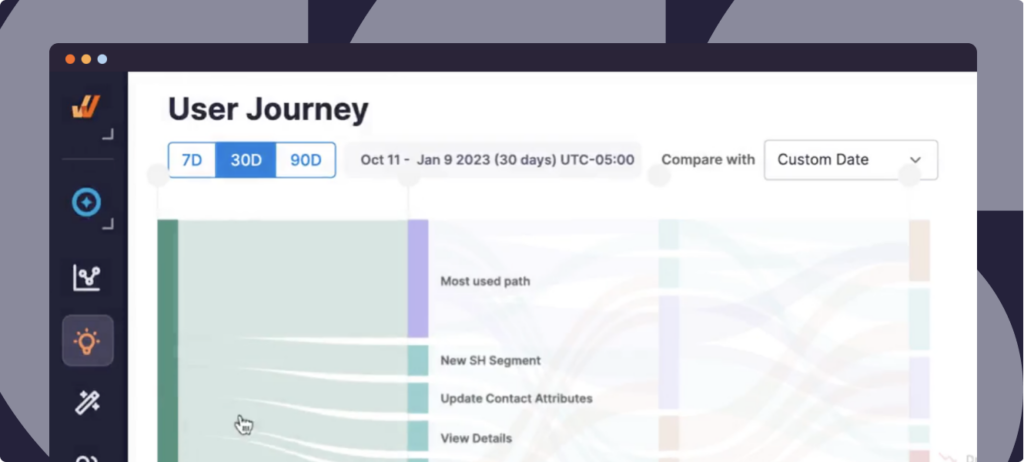
Whatfix Product Analytics comes out of the box with core analytics features and data reporting capabilities like:
These insights enable organizations to take a continuous approach to application development, process optimization, user experience, and overall technology adoption. Identify areas of friction in your funnels that result in high dropoff, and test new in-app content to improve conversions.
GenAI. Predictive analytics. Digital assistants. Adaptive experiences. Digital twins. AR/VR. Process mining. These cutting-edge technologies are leading the pack in terms of technology innovation. Organizations must invest in DAP partners that embrace these new technologies to differentiate themselves from competitors and gain a business advantage.
Consider how much technology has changed over the last year. Now look forward. You need a DAP partner that invests in product R&D. That partner is Whatfix, who has the highest score among DAP vendors on G2 for the question “Is the product heading in right direction?” at 97%.
At Whatfix, we’re heavily investing in two areas:
Whatfix seamlessly integrates GenAI into its digital adoption platform, allowing content creators and application owners to create user-centric in-app experiences and understand application usage – while also enabling end-users with digital assistants to write better and complete tasks faster.
Whatfix AI includes three features (Read, Write, and Do) that enable DAP content creators and application end-users with the tools to maximize technology usage. Let’s explore each feature below:
‘Read’ streamlines the process of extracting, organizing, and synthesizing key themes, accelerating information discovery by 80%. Each AI model is trained on your knowledge repositories and user actions, resolving end-users issues with an intelligence in-app assistant. It also Whatfix AI extracts and synthesizes key themes, user events, and application usage.

With ‘Write’, end-users can utilize an in-app digital scribe to complete every day tasks like taking notes and writing emails. It can elaborate on ideas, change tone, provide a summary, and more. This feature is also implemented into Whatfix DAP’s editor, providing content creators with a writing assistant to create better in-app content.

‘Do’ revolutionizes the way end-users interact with an application’s GUI through natural language instructions, performing in-app tasks based on directions and inputs from users. Application end-users can simply prompt Whatfix AI to complete a task (like creating a new opportunity in a CRM), and it automatically completes it.

Whatfix Mirror is a direct result of closing the customer feedback loop and designing new products that solve complex technology adoption problems for our customers. A Whatfix customer faced challenges end-user onboarding and training challenges for its service agents, who required two months of system training before being able to interact with live tickets. These agents also had high turnover, and the company had seasonal peaks that required them to onboard more agents at certain times of the year.
In collaboration with this partner, we built Whatfix Mirror, which enables non-technical team members to create interactive sandbox environment replicas of web applications for user acceptance testing for new applications and hands-on user training without the risks of live software usage.
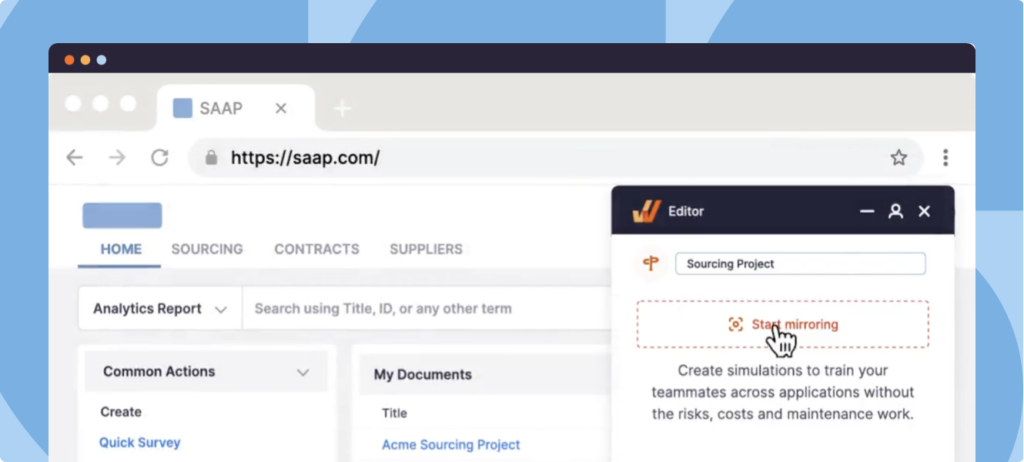
Paired with Whatfix DAP, customers can accelerate time-to-proficiency for new hires and prepare them for real interactions and tasks through a learning-by-doing method. It auto-captures user engagement and application usage data to benchmark, measure, and improve your simulated training programs.

As the digital adoption platform market matures, partnerships between DAP providers and enterprise software companies have formed. Enterprise software vendors provide technical insights and resources to certain DAP vendors to build contextual capabilities specific to their platforms – establishing them as the official DAP solution for that vendor.
Ask the DAP vendors on your shortlist if they have an independent software vendor (ISV) partner network in your early conversations. These partners provide benefits, like allowing the DAP to natively overlay directly on third-party software and does not require any end-user IT involvement to launch. The ease of integration makes content creation effortless and provides out-of-the-box content libraries and templates to reduce time-to-value.
Whatfix’s independent software vendor (ISV) partner network spans dozens of established, market-leading SaaS providers, including enterprise software vendors like:
Often, technology providers offer similar capabilities. When it comes down to make a final decision, the add-on product services can be the deal maker or breaker.
Ask the digital adoption platform providers on your shortlist questions like:
Whatfix has heavily invested in its customer value add-ons, offering a variety of additional learning opportunities, customer success initiatives, and digital adoption consulting and strategy building, including:
Once you have finalized your digital adoption technology parter, its time to start realize value. Here are a few best practices to help you start to drive business outcomes from your digital adoption platform investment:
Don’t see your answer? Send a message to our live chat, we’d be happy to help!
Absolutely! You can sign up for a free trial to give Whatfix a test drive here.
For full pricing information, please visit out pricing page.
Pricing for each product and plan is composed of a flat fee, plus user license fees. The flat fee depends on the product and plan you need. User license fees are defined based on the type of user who will access the application where Whatfix will be deployed, as further defined below:
For employee-facing applications used by your employees for internal business functions a user license is equal to the total number of users with access to such application.
For customer-facing applications used by your customers or external-facing users (partners or any other third-party) a user license is equal to the monthly active users (MAUs) with access to such applications.
Explore our Compare Hub to see why Whatfix is the DAP market leader. If you’re looking for a specific DAP vendor, you can explore our research on the following digital adoption technology competitors:
Whatfix supports both cloud and on-premise implementations.
For our cloud offering, you just need to install our Whatfix Editor extension on Chrome or Firefox, and you are ready to get started. Our editor’s user experience is so simple that you can create interactive guides easily, with no technical dependencies or setup required.
We also offer full support for on-premise setups. Our on-premises export version allows you to export and deploy Whatfix guides on your own web server.
You can see how hundreds of global companies across industries are using Whatfix to drive technology adoption – including customer stories on Whatfix partners including Cardinal Health, Sentry Insurance, ManpowerGroup, Sophos, REG, and more – on our case studies section here.
You can find Whatfix DAP on all major software review websites including G2, Capterra, SoftwareAdvice, Gartner, TrustRadius, etc. We recommend starting with Whatfix reviews on G2.com, as it is the largest, most established third-party review network. With 350+ reviews, Whatfix has been named a Leader in the DAP category for 9 consecutive reports.
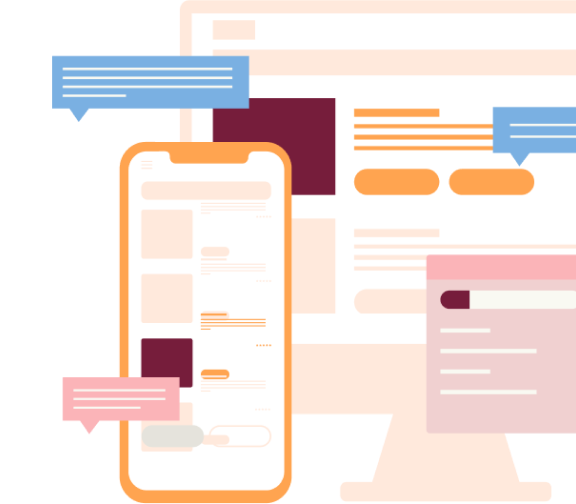
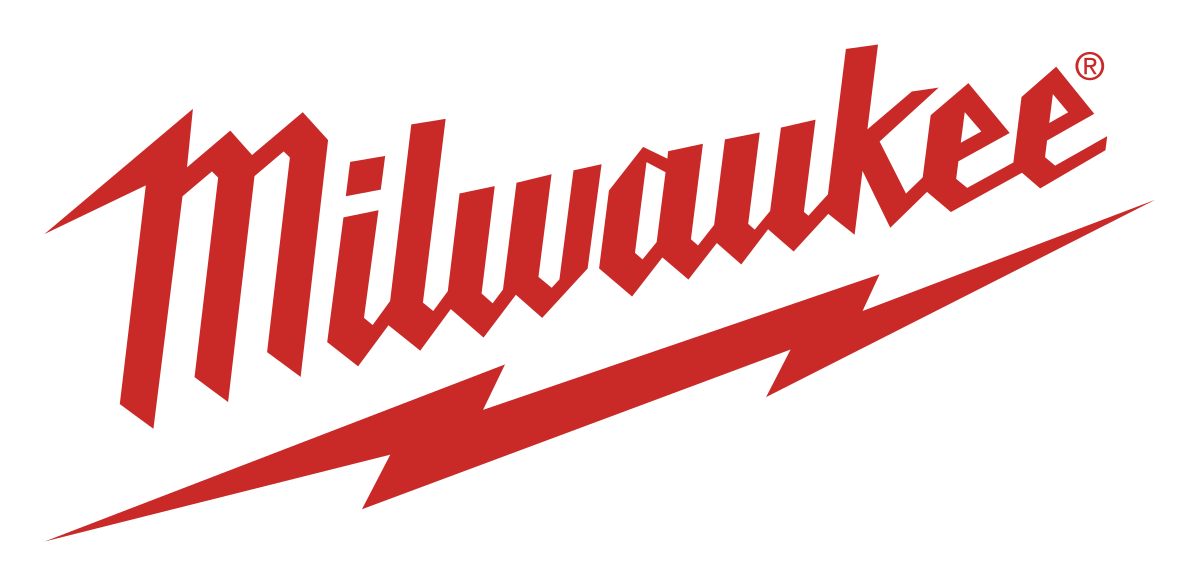


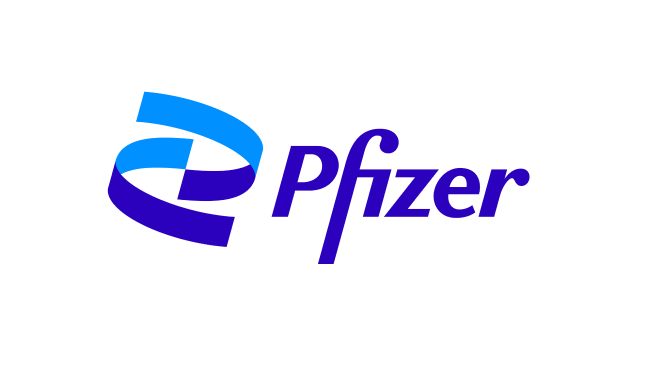
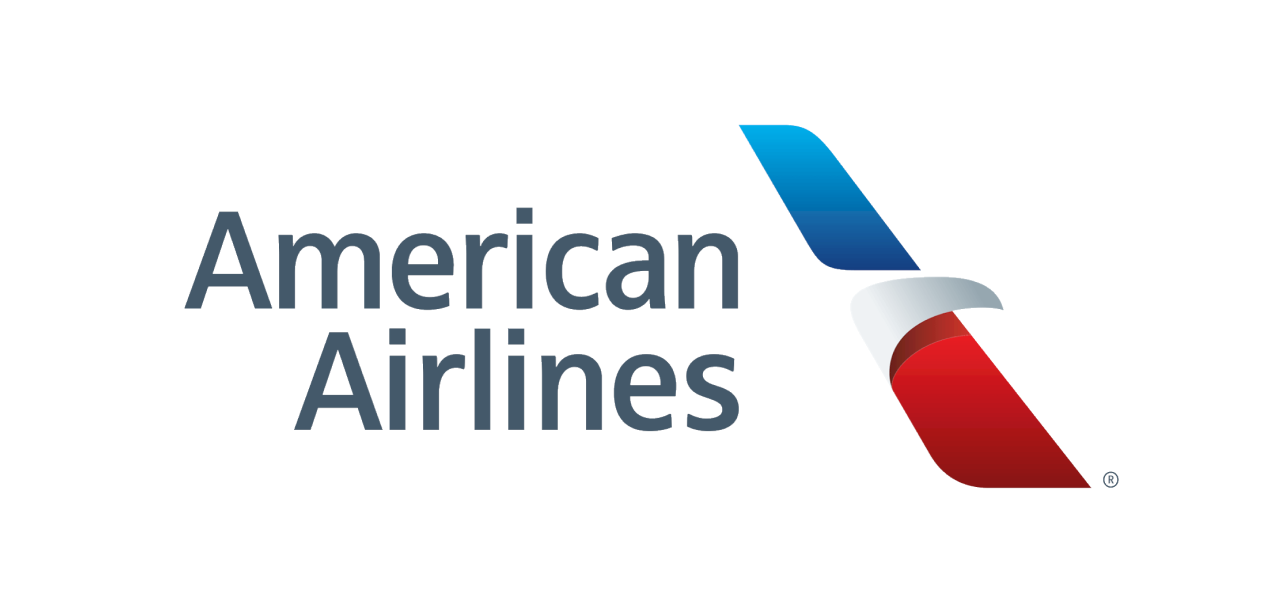
2. Seek out social proof